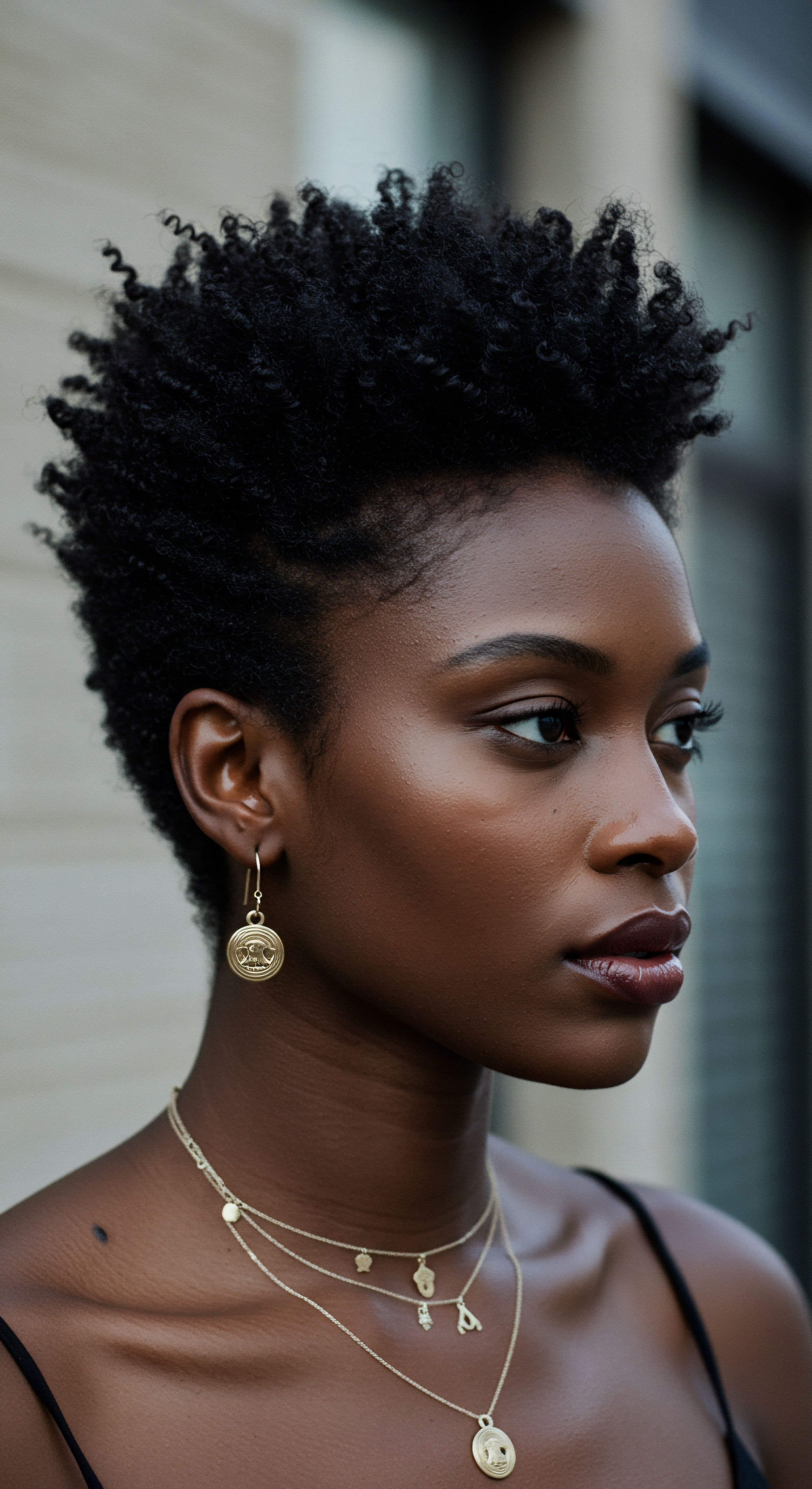
Fundamentals
Imagine a gentle whisper, an unseen force that can make a single strand of hair dance, or a whole crown of coils stand in playful defiance. This subtle yet potent phenomenon, known as Static Electricity, arises from a simple truth ❉ our world is alive with tiny, energetic particles called electrons. Ordinarily, objects maintain a delicate balance of these charges, existing in a state of electrical neutrality. Yet, when two different surfaces come into contact and then part ways, particularly those that do not readily conduct electricity, a remarkable exchange can occur.
Electrons, eager travelers, may leap from one surface to the other, creating an imbalance. One surface gains a surplus of these negative charges, while the other is left with a deficit, resulting in a positive charge. This separation of charge, remaining fixed in one place rather than flowing as a current, is the very essence of static electricity.
For those of us with textured hair, this ethereal electrical occurrence manifests in deeply personal ways. Picture the delightful spring in a fresh twist-out, suddenly disrupted by strands reaching out to embrace the air, or clinging to a favorite scarf. This common experience of hair seemingly developing a will of its own, standing on end or attracting neighboring fibers, provides a tangible demonstration of this invisible force at play. It reminds us that our hair, a vibrant expression of identity and heritage, also serves as a fascinating canvas for fundamental scientific principles.
Static electricity is the unseen electrical embrace or playful repulsion between objects, born from an imbalance of electrons.

The Silent Dance of Electrons
Every object, from the softest cotton to the smoothest silk, holds atoms, which are themselves composed of protons, neutrons, and electrons. Protons carry a positive charge, electrons bear a negative charge, and neutrons possess no charge. In a balanced state, an equal number of protons and electrons exists, leading to overall neutrality. When materials rub against each other, or even simply touch and separate, the outermost electrons, held loosely by their atoms, can transfer.
One material acquires extra electrons, becoming negatively charged, while the other loses them, becoming positively charged. This charge separation persists because the materials are insulators, preventing the charges from flowing away quickly.
Consider a balloon rubbed against a wool sweater. Electrons migrate from the wool to the balloon. The balloon now holds a net negative charge, and the wool a net positive charge.
When the balloon approaches hair, the positively charged hair strands are drawn towards the negatively charged balloon, causing them to lift and seemingly defy gravity. This common experiment vividly illustrates the basic concept of electrical attraction.

Why Our Hair Feels the Charge
Textured hair, with its unique structure and inherent propensity for dryness, often becomes a prime candidate for exhibiting static electricity. The beautiful coils, curls, and kinks of Black and mixed hair create numerous points of contact between individual strands. This increased surface interaction, both between hairs and with external materials like clothing or styling tools, heightens the likelihood of electron transfer through friction. Each time a comb glides through dry strands, or a head rests against a pillow, a silent electrical exchange may take place.
The outermost layer of hair, the Cuticle, consists of overlapping scales. When hair is dry, these scales can lift, increasing the surface area available for friction and electron transfer. This elevated friction contributes significantly to the build-up of static charges.
Moreover, dry hair lacks the moisture that would typically help dissipate these charges, allowing them to accumulate and remain on the hair fiber for longer durations. This combination of structural characteristics and moisture dynamics makes textured hair particularly susceptible to static phenomena.
| Material Wool |
| Charge Tendency Often becomes positively charged |
| Interaction with Hair Can transfer electrons to hair, leaving hair positively charged and repelling. |
| Material Synthetic Fabrics (e.g. Polyester) |
| Charge Tendency Often becomes negatively charged |
| Interaction with Hair Can gain electrons from hair, leaving hair positively charged. |
| Material Plastic Combs/Brushes |
| Charge Tendency Often becomes negatively charged |
| Interaction with Hair Removes electrons from hair, causing hair to stand up. |
| Material Silk |
| Charge Tendency Often becomes negatively charged |
| Interaction with Hair Generally less prone to static transfer than other fabrics, but can still cause minor effects. |
| Material Understanding these interactions aids in selecting hair accessories and clothing. |

Intermediate
Moving beyond the basic definition, an intermediate comprehension of Static Electricity in the context of textured hair involves exploring its practical manifestations and the subtle factors influencing its presence in our daily care routines. This electrical phenomenon, often perceived as a mere nuisance, holds deeper implications for hair health and styling longevity. It arises from the principle of Triboelectricity, where contact and subsequent separation between two materials lead to a transfer of electrons.
The precise direction and magnitude of this charge transfer depend on the materials’ positions within the triboelectric series, a classification of substances based on their tendency to gain or lose electrons. Hair, composed primarily of keratin, typically tends to lose electrons, thus acquiring a positive charge when rubbed against common materials like plastics or synthetic fibers.
The meaning of static electricity for textured hair extends beyond just visible flyaways; it speaks to the hair’s overall moisture content and the integrity of its outermost layer. When hair experiences significant static, it often signals a need for increased hydration or a review of styling practices. This electrical charge, though invisible, can subtly alter the hair’s surface, making it feel rougher or more difficult to manage.

Environmental Influences and Hair’s Response
Humidity plays a paramount role in the behavior of static electricity. In dry environments, particularly during colder months or in arid climates, the air lacks sufficient moisture to act as a conductor. This absence of water molecules prevents accumulated charges from readily dissipating into the surroundings. Consequently, electrons transferred during friction remain trapped on the hair fibers, leading to a noticeable build-up of static.
Conversely, in humid conditions, water molecules in the air facilitate the movement of electrons, allowing charges to neutralize more easily. This explains why static hair is less prevalent in tropical climates compared to dry, indoor heated spaces.
Consider the contrast between hair in a humid summer breeze and hair in a dry, heated winter room. The same hair type will exhibit vastly different static behaviors. This environmental responsiveness underscores the importance of adapting hair care routines to suit prevailing atmospheric conditions. Hair’s physical response to humidity is not merely aesthetic; it is a direct consequence of the environment’s impact on its electrical properties.
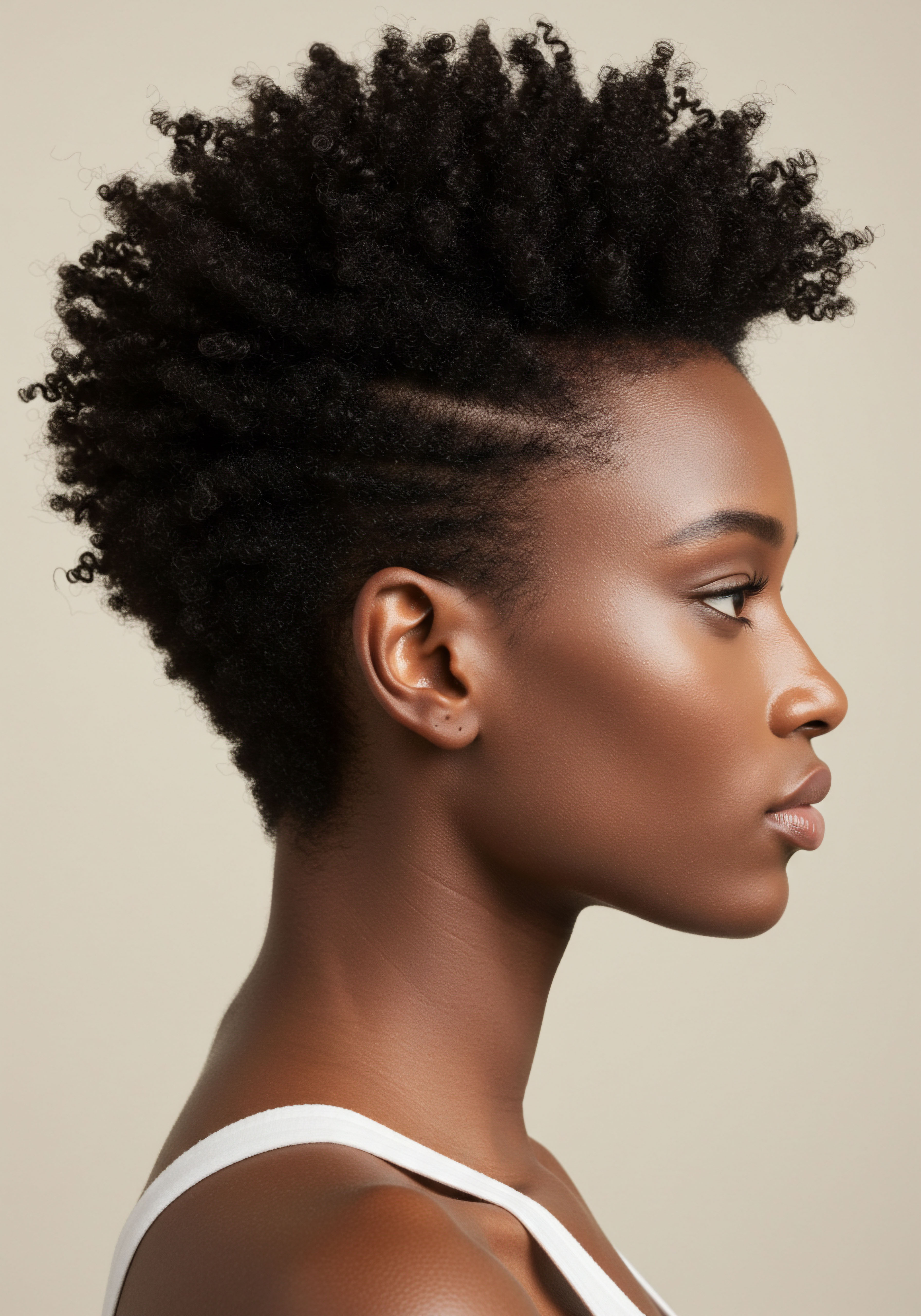
Tools and Textures ❉ A Charged Interaction
The implements we use in our hair care rituals significantly influence the generation of static electricity. Plastic combs and brushes, common tools for detangling and styling, are notorious for creating static. Their material composition readily exchanges electrons with hair fibers, particularly when hair is dry.
This exchange leaves hair positively charged, causing strands to repel each other and stand away from the head. The sensation of a comb “pulling” at the hair, accompanied by audible crackling, serves as a clear indication of charge transfer.
Choosing tools crafted from materials that are less prone to static generation, such as wood or certain metals, can mitigate this effect. These materials either have different triboelectric properties or are more conductive, allowing charges to dissipate more readily. The interaction between hair and styling tools is a constant dance of contact and separation, making material selection a vital consideration for minimizing unwanted electrical effects.
Hair’s electrical charge is a subtle indicator of its moisture levels and the unseen friction it encounters.
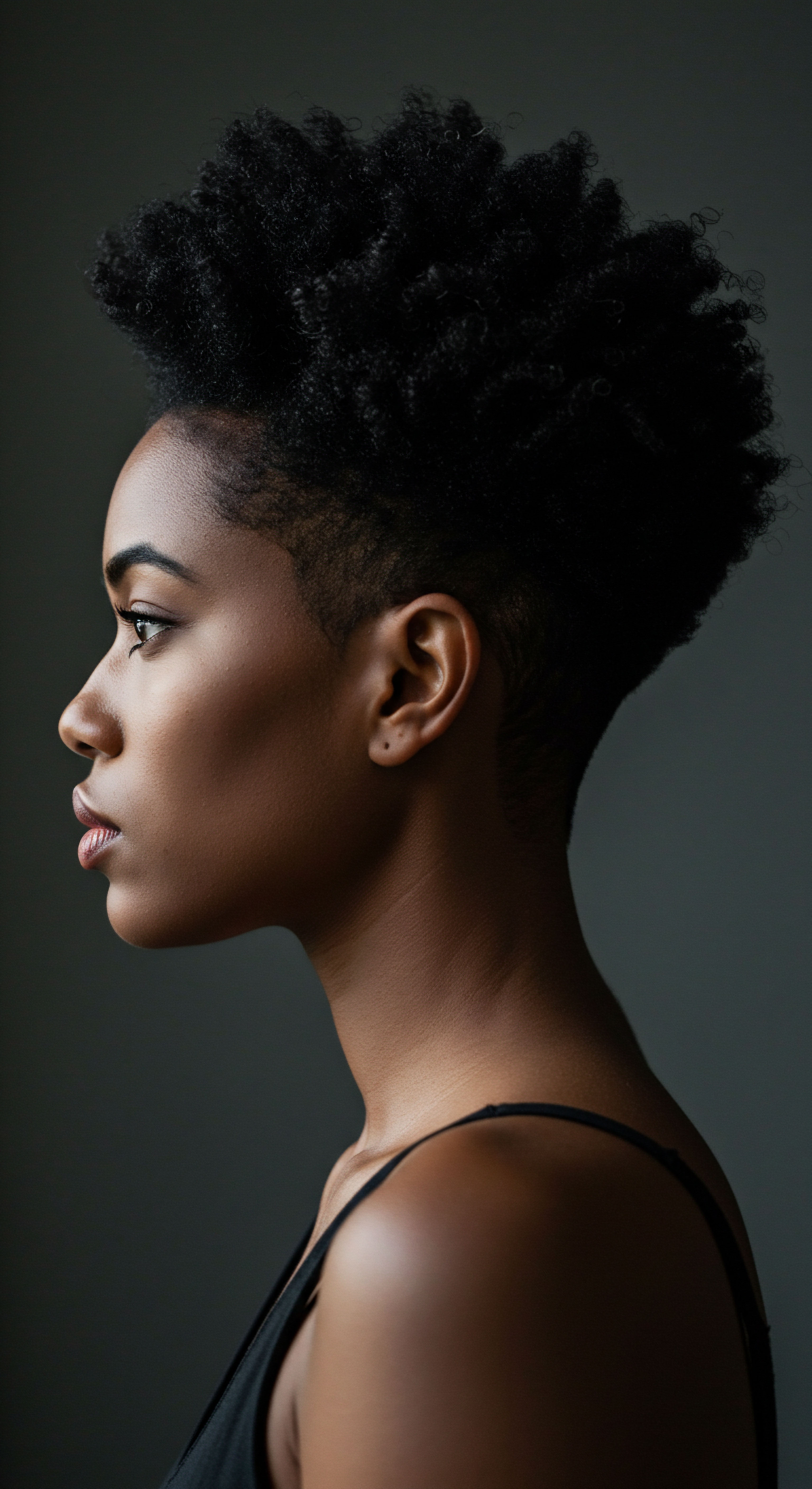
Practical Manifestations in Daily Care
Static electricity reveals itself in numerous everyday scenarios for individuals with textured hair. Removing a scarf or hat can leave hair electrified, standing in disarray. This occurs as the fabric rubs against the hair, transferring electrons.
Similarly, sleeping on certain pillowcases, especially those made of cotton, can create friction throughout the night, resulting in morning static and tangles. Even the simple act of detangling dry hair can generate substantial static, making the process more challenging and potentially leading to breakage.
Addressing these daily occurrences involves strategic choices in hair care. Incorporating leave-in conditioners or hair milks helps to coat the hair strands, providing a smoother surface that reduces friction and allows for better charge dissipation. Using silk or satin scarves and pillowcases, which are smoother and create less friction than cotton, also minimizes static accumulation during sleep or when covering the hair. These seemingly small adjustments can collectively contribute to a more harmonious relationship with hair’s electrical tendencies.
- Dry Detangling ❉ Combing or brushing dry textured hair without sufficient moisture can significantly increase static charge due to heightened friction between strands and the styling tool.
- Clothing Contact ❉ Friction with synthetic fabrics like acrylic sweaters, nylon scarves, or wool hats can readily transfer electrons, leaving hair charged.
- Low Humidity Environments ❉ Indoor heating during winter or arid climates reduces air moisture, preventing static charges from dissipating and allowing them to accumulate on hair fibers.

Advanced
Static electricity, within the intricate biophysical landscape of textured hair, represents an imbalance of electrical charge, primarily electrons, that accumulates on the hair fiber’s surface, a phenomenon governed by the Triboelectric Effect, where contact and separation between dissimilar materials, such as hair and fabric, result in charge transfer and subsequent retention due to the hair’s inherent insulating properties and unique morphological characteristics. This explication extends beyond a mere definition; it is a deep dive into the underlying physical principles, the unique biological architecture of textured hair, and the broader implications for hair health, cultural practices, and cosmetic science. The designation of this phenomenon moves beyond simple observation to a rigorous analysis of its mechanisms and consequences.
The meaning of static electricity for textured hair encompasses not only its scientific explanation but also its profound impact on the daily lived experience and long-term care strategies within Black and mixed-race hair communities. It compels a reconsideration of conventional hair care paradigms, demanding solutions that respect the unique biophysical properties of these hair types. The substance of this discussion reveals how a seemingly minor electrical occurrence holds substantial weight in the realm of trichology and hair aesthetics.

The Triboelectric Effect and Hair Morphology
At its core, static electricity on hair is a manifestation of the triboelectric effect, a form of contact electrification where materials exchange electrons upon contact and subsequent separation. Human hair, largely composed of keratin protein, possesses a distinct position within the triboelectric series, typically acquiring a positive charge when rubbed against materials like plastics, wool, or synthetic fibers. This positive charge arises from the hair’s tendency to donate electrons during frictional interaction. The structural complexities of textured hair, characterized by its helical and often flattened cross-sectional shape, significantly influence this process.
The numerous bends, twists, and coils present in highly textured strands increase the cumulative surface area available for contact and friction, both between individual hair fibers and with external surfaces. This amplified contact translates into a greater potential for electron transfer and, consequently, more pronounced static charge accumulation compared to straighter hair types.
Consider the cuticle, the outermost protective layer of the hair shaft, which consists of overlapping scales. In textured hair, these scales can be more raised or prone to lifting, especially when hair is dry or damaged. Such lifted cuticles increase the coefficient of friction, exacerbating the triboelectric effect and facilitating electron transfer.
This heightened friction not only generates more static but also contributes to mechanical stress, potentially leading to cuticle damage and subsequent protein loss over time. The interaction between hair morphology and triboelectric charging is a critical area of investigation for understanding hair health.

The Role of Melanin and Conductivity
A less commonly discussed aspect of static electricity in textured hair involves the potential role of Melanin, the pigment responsible for hair color. Eumelanin, the dark brown pigment prevalent in Black and mixed hair, has been observed to possess semiconductor properties. While its natural conductivity is typically low, research indicates that its electrical properties can be significantly altered under specific conditions, such as heat treatment. This suggests a theoretical avenue for exploring how melanin content might influence charge dissipation or retention in highly pigmented hair.
Though natural hair’s melanin isn’t a strong conductor in its everyday state, the presence of a semi-conductive pigment raises intriguing questions about charge distribution and dissipation pathways within the hair fiber itself. Could variations in melanin density or distribution along a single strand impact how charges move or become localized? While more targeted research is needed to fully clarify this complex interplay, the very notion of melanin’s conductive potential presents a unique biophysical dimension to the study of static electricity in textured hair. This concept, often overlooked in generalized discussions of static, adds a layer of depth to our comprehension of Black and mixed hair’s unique properties.
The inherent coiled structure of textured hair and the biophysical properties of its melanin present a unique interplay with static charge.
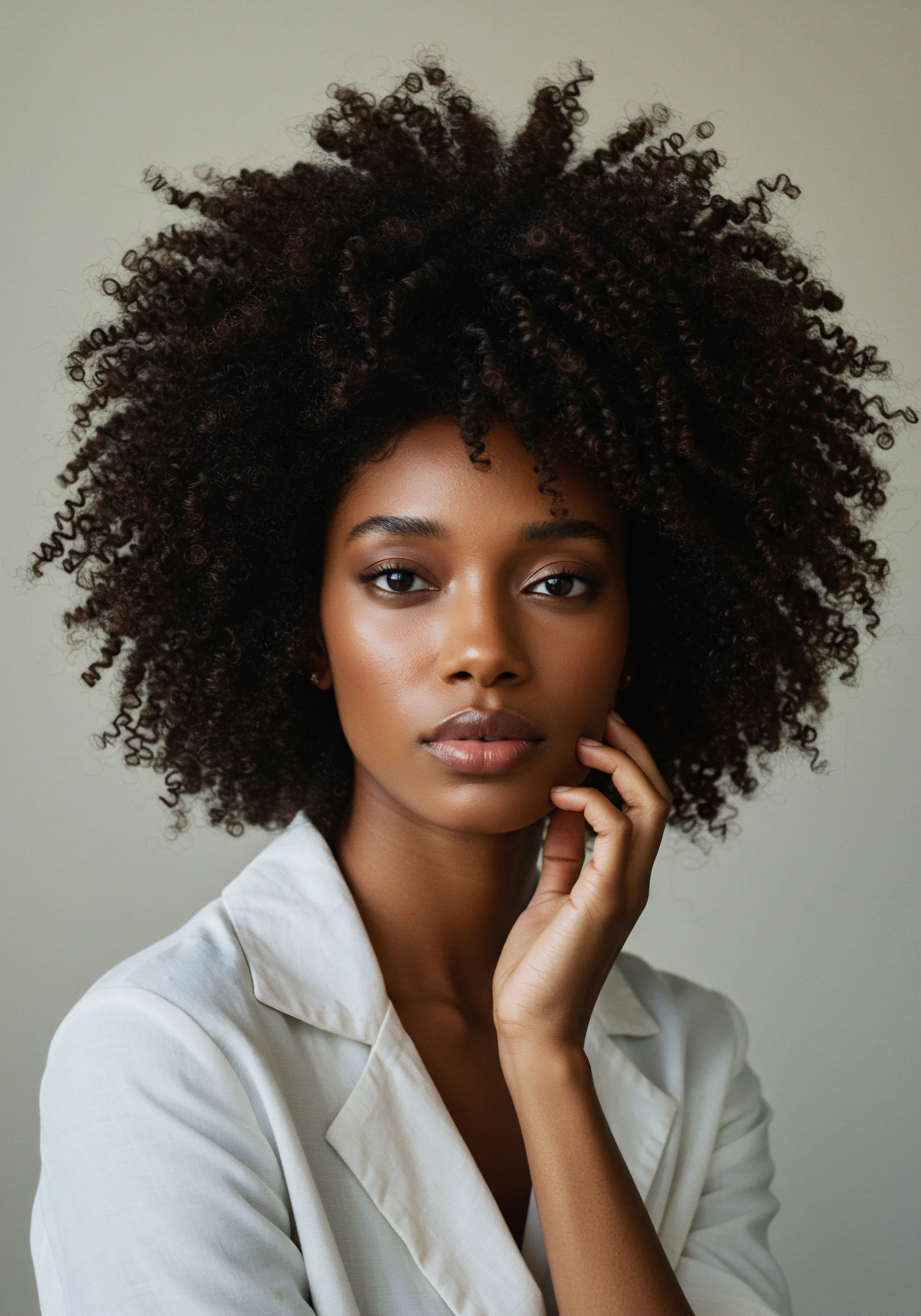
Environmental Dynamics and Biophysical Implications
The interplay between environmental humidity and the electrical properties of textured hair is more intricate than simple dryness. Humidity acts as a conduit for charge dissipation; water molecules, being polar, can facilitate the movement of ions and electrons, thereby neutralizing static charges on hair surfaces. Textured hair, often characterized by a more open cuticle structure and a greater surface area, can be particularly susceptible to rapid moisture fluctuations.
In low humidity environments, the hair’s ability to shed accumulated charge is significantly hindered, leading to persistent static. Conversely, excessive humidity can cause hair to absorb water unevenly, leading to swelling and a phenomenon known as “frizz,” which is also linked to charge distribution and fiber repulsion.
Beyond immediate cosmetic concerns, chronic exposure to static electricity can have long-term biophysical consequences for textured hair. Repeated episodes of static-induced repulsion and friction contribute to cuticle lifting and mechanical abrasion. This continuous stress can compromise the hair fiber’s structural integrity, leading to increased porosity, dryness, and ultimately, breakage.
The collective effect of these microscopic damages over time can diminish hair’s overall resilience and length retention. This delineation highlights the systemic impact of environmental factors on hair health.
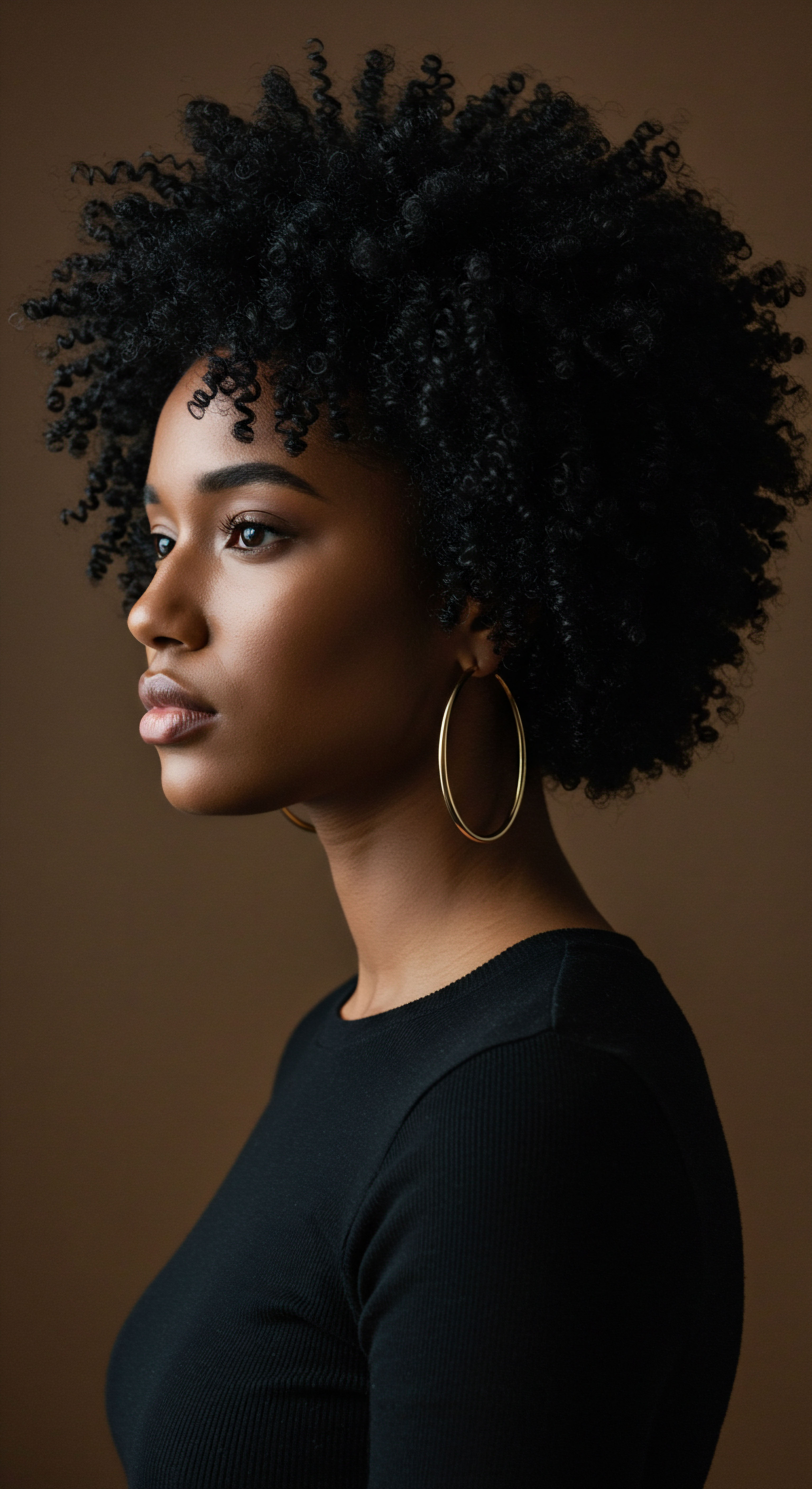
Strategic Management and Expert Perspectives
From an advanced perspective, managing static electricity in textured hair transcends merely using anti-static sprays; it necessitates a comprehensive approach rooted in understanding hair’s intrinsic properties and environmental responsiveness. Cosmetic chemists and trichologists focus on formulations that not only provide surface lubrication but also enhance the hair’s internal moisture balance and cuticle integrity. Cationic polymers, for example, are frequently employed in conditioners because their positive charge neutralizes the negative charges on hair fibers, reducing repulsion and smoothing the cuticle. This neutralization helps to lay the cuticle scales flat, thereby decreasing friction and preventing static accumulation.
The strategic use of humectants and emollients in hair products is paramount. Humectants attract and retain moisture from the atmosphere, improving the hair’s conductivity and facilitating charge dissipation. Emollients create a protective film on the hair surface, reducing direct friction and subsequent electron transfer. Furthermore, the selection of hair tools, such as those made from conductive materials or with anti-static coatings, represents a practical application of electrical principles.
From an expert standpoint, understanding the specific triboelectric properties of different hair types and their interactions with various materials is critical for developing truly effective and tailored hair care solutions. This requires a nuanced understanding of the hair’s unique protein structure and its response to both chemical and physical stimuli.
The persistent challenges of static electricity in textured hair, particularly in dry climates, underscore a broader societal need for innovative solutions that respect diverse hair needs. For instance, a study published in the journal Materials Horizons demonstrated that human hair, a naturally regenerative substance, exhibits a significant triboelectrification effect and can even be processed into films for use in triboelectric nanogenerators (TENGs), capable of producing substantial voltage (e.g. a mean peak-to-peak voltage of 370.8 V and a mean output power density of 247.2 μW cm⁻²). This research, while focused on energy harvesting, powerfully illustrates the inherent electrical activity of hair and its potential for charge generation.
The fact that hair can be harnessed for such purposes emphasizes its intrinsic electrical properties and the considerable charge it can accumulate, especially relevant for textured hair with its increased surface contact. This observation compels us to view static not merely as a nuisance, but as an energetic characteristic of hair that, if understood deeply, can inform more effective care strategies and even novel applications.
From a corporate or expert perspective, this scientific comprehension allows for the development of targeted product lines and educational initiatives. Investing in research that isolates the specific charge behaviors of different curl patterns, and how these respond to various ingredients and environmental factors, holds long-term success insights. This involves moving beyond generic “anti-frizz” claims to offering solutions based on precise electrical science. The future of textured hair care lies in a symbiotic relationship between traditional wisdom and cutting-edge biophysical understanding, ensuring hair remains vibrant, resilient, and free from the unwelcome embrace of static charge.
| Relative Humidity Level Low (below 30%) |
| Effect on Hair Charge Dissipation Significantly reduced; charges accumulate readily. |
| Typical Hair Appearance Increased flyaways, hair stands on end, clinging. |
| Relative Humidity Level Moderate (30-60%) |
| Effect on Hair Charge Dissipation Balanced dissipation; some static possible with friction. |
| Typical Hair Appearance Generally well-behaved, minimal static unless highly agitated. |
| Relative Humidity Level High (above 60%) |
| Effect on Hair Charge Dissipation Enhanced dissipation; charges transfer more easily. |
| Typical Hair Appearance Reduced static, but potential for frizz due to water absorption. |
| Relative Humidity Level Adjusting hair care to humidity levels can mitigate static effects. |

Long-Term Consequences and Holistic Hair Health
The repeated mechanical stress induced by persistent static electricity on textured hair extends beyond immediate cosmetic concerns. Each instance of static attraction or repulsion involves microscopic forces acting upon the delicate cuticle scales. Over time, this repetitive stress can lead to the erosion of the cuticle layer, exposing the inner cortex of the hair fiber.
An exposed cortex is more vulnerable to moisture loss, environmental damage, and chemical processing, accelerating the hair’s degradation cycle. This continuous mechanical assault contributes to increased hair porosity, making strands more difficult to moisturize and retain hydration, perpetuating a cycle of dryness that, in turn, exacerbates static accumulation.
The implications for overall hair health are substantial. Chronic static can lead to diminished elasticity, increased susceptibility to split ends, and a noticeable reduction in overall hair strength. For individuals striving for length retention and robust hair, mitigating static becomes a vital component of a holistic care regimen. This consideration extends to the very tools used for styling and the materials that come into contact with hair, from scarves to pillowcases.
A proactive stance, understanding the electrical characteristics of hair, allows for informed choices that preserve the hair’s integrity and support its long-term vitality. The connection between seemingly minor electrical charges and cumulative structural compromise offers a powerful directive for comprehensive hair care.
- Cuticle Abrasion ❉ Repeated static interactions can cause the hair’s outer cuticle layer to lift and abrade, diminishing its protective capacity.
- Increased Porosity ❉ Damage to the cuticle leads to higher porosity, making hair less able to retain moisture and more susceptible to environmental stressors.
- Compromised Strength ❉ Long-term static-induced stress contributes to reduced hair elasticity and an increased likelihood of breakage and split ends.
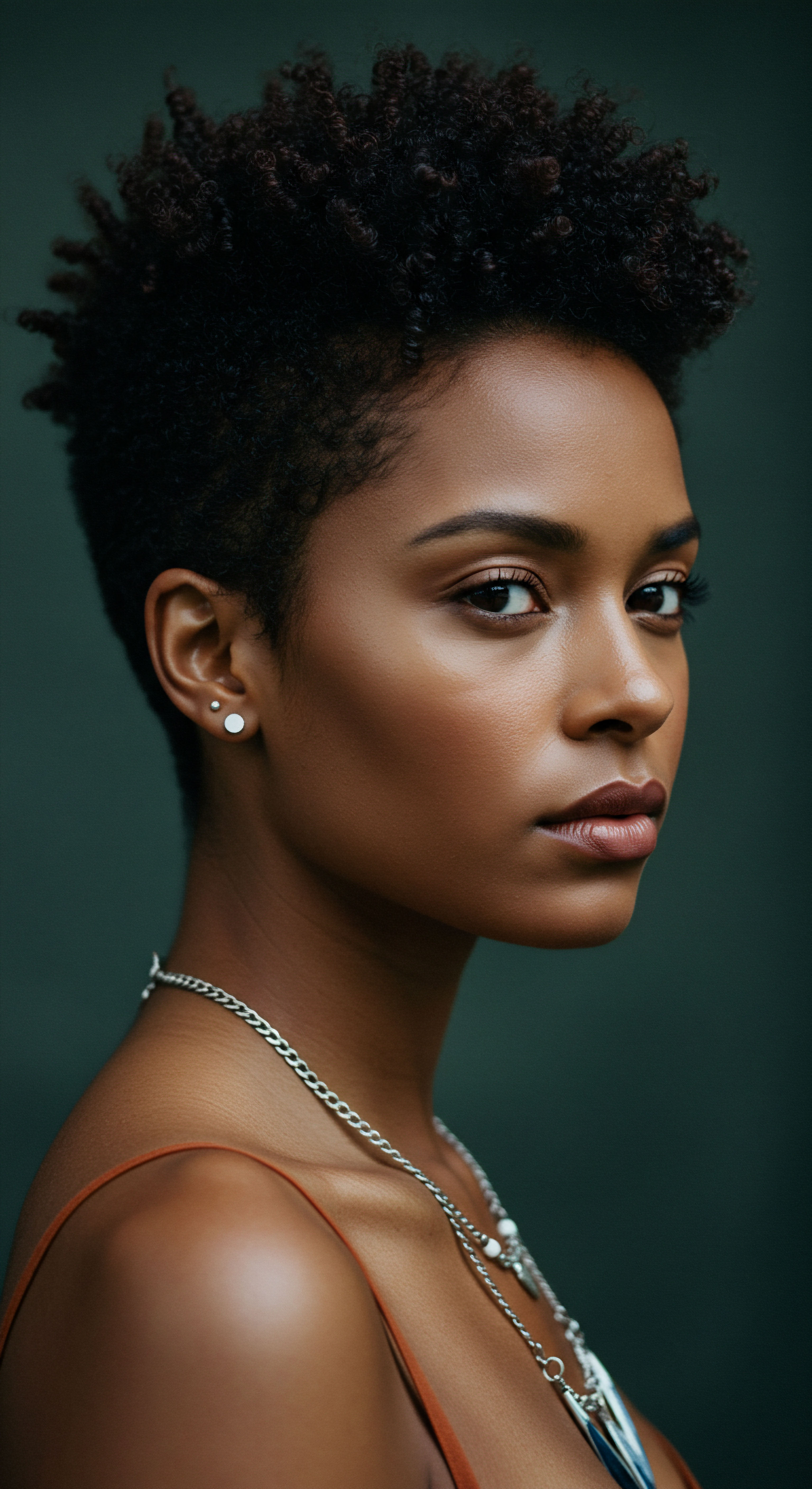
Reflection
The presence of static electricity on textured hair offers more than a simple scientific curiosity; it serves as a gentle reminder of the profound interconnectedness between our hair’s unique biology, the unseen forces of the physical world, and the intentionality of our care rituals. It beckons us to look beyond superficial solutions, encouraging a deeper connection with the very fabric of our strands. Understanding this electrical phenomenon, from its fundamental charge transfers to its intricate dance with humidity and hair morphology, empowers us to approach our hair with a more informed and compassionate spirit.
Each strand, with its distinctive coil and curl, holds a story of resilience and adaptability, capable of responding to the slightest shift in its environment. Recognizing static as a signal, a whisper from our hair about its hydration levels or the gentle friction it experiences, transforms a challenge into an opportunity for heightened awareness. This journey of comprehension allows us to move with greater intention, selecting tools and products that honor hair’s delicate balance, fostering an environment where every curl can truly flourish, free from unnecessary electrical entanglements. It is a celebration of hair’s energetic life, guiding us toward practices that truly nourish and protect its vibrant spirit.

References
- Robbins, Clarence R. The Chemical and Physical Behavior of Human Hair. 5th ed. Springer, 2012.
- Pezzella, Alessandro, and Paolo Tassini. “A Breakthrough Process that Dramatically Enhances Eumelanin’s Conductivity.” Frontiers in Chemistry, 2019.
- Yang, Fei-Chi, Yuchen Zhang, and Maikel C. Rheinstädter. “The Structure of People’s Hair.” PeerJ, vol. 2, 2014.
- Chakraborty, Ishita, et al. “Charge Trapping with α-Fe2O3 Nanoparticles Accompanied by Human Hair Towards an Enriched Triboelectric Series and a Sustainable Circular Bioeconomy.” Materials Horizons, vol. 8, no. 11, 2021, pp. 3149-3162.
- Sakamoto, Kazutami, et al. Cosmetic Science and Technology ❉ Theoretical Principles and Applications. Elsevier, 2017.
- Kowalski, Kathiann. “Science Works to Demystify Hair and Help It Behave.” Science News Explores, 2024.
- Schoon, Douglas D. Hair Structure and Chemistry Simplified. 4th ed. Milady, 2001.
- Embi, Abraham A. “Demonstration of the Human Hair Shaft as Transmitter/Receiver of Electromagnetic Forces.” Journal of Nature and Science (JNSCI), vol. 2, no. 5, 2016.
- Jachowicz, J. M. Garcia, and G. Wis-Surel. “Relationship Between Triboelectric Charging and Surface Modification of Human Hair ❉ Polymeric Versus Monomeric Long Alkyl Chain Quaternary Ammonium Salts.” Textile Research Journal, vol. 57, no. 9, 1987, pp. 543-548.
- Draelos, Zoe Diana. Cosmetic Dermatology ❉ Products and Procedures. Blackwell Publishing, 2010.
- Dias, Marcelo. “Hair Cosmetics ❉ An Overview.” International Journal of Trichology, vol. 7, no. 1, 2015, pp. 2-15.
- Koga, Y. et al. “Recent Progress in Hair Science and Trichology.” Journal of Oleo Science, vol. 72, no. 11, 2023, pp. 1385-1396.